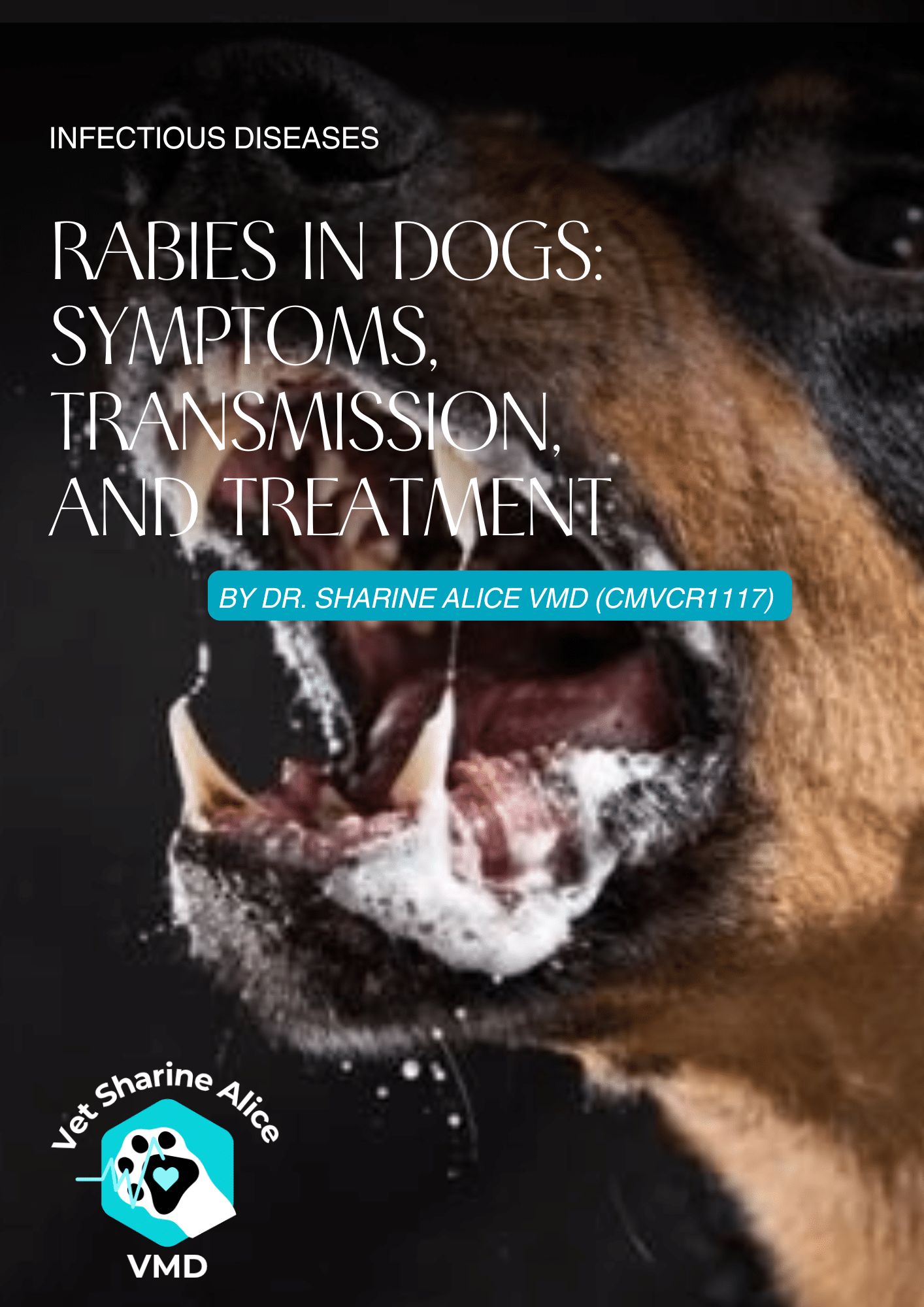By Dr. Sharine Alice, VMD — CMVCR1117
Playa Hermosa, Guanacaste | WhatsApp: (506) 8307-8400
Rabies is one of the most serious infectious diseases affecting both animals and humans. Caused by the Rabies lyssavirus, this fatal viral infection targets the central nervous system, leading to progressive neurological symptoms and, ultimately, death.
Transmission and Risk
The virus is mainly transmitted through the bite of an infected animal, as the virus is present in saliva. Once introduced into the body, it travels along peripheral nerves to the brain, causing inflammation and irreversible damage. According to the World Health Organization (WHO), domestic dogs account for nearly 99% of human rabies cases worldwide, making vaccination and control in dogs essential to prevent human infection.

Clinical Signs
Rabies typically develops in three stages. The initial phase includes subtle changes in behavior—anxiety, restlessness, or isolation. The furious phase may involve aggression, disorientation, excessive salivation, and difficulty swallowing. In the final paralytic stage, the animal experiences muscle weakness, paralysis, and respiratory failure, leading to death within a few days.
Diagnosis and Prevention
Diagnosis is confirmed through laboratory testing, but prevention remains the most effective approach. Vaccination is the cornerstone of rabies control. Puppies should receive their first rabies vaccine between 12–16 weeks of age, followed by regular boosters as recommended by a veterinarian.
Public awareness and responsible pet ownership—keeping vaccinations current, avoiding contact with wildlife, and seeking immediate veterinary care after potential exposure—are vital steps toward eliminating this deadly disease.







